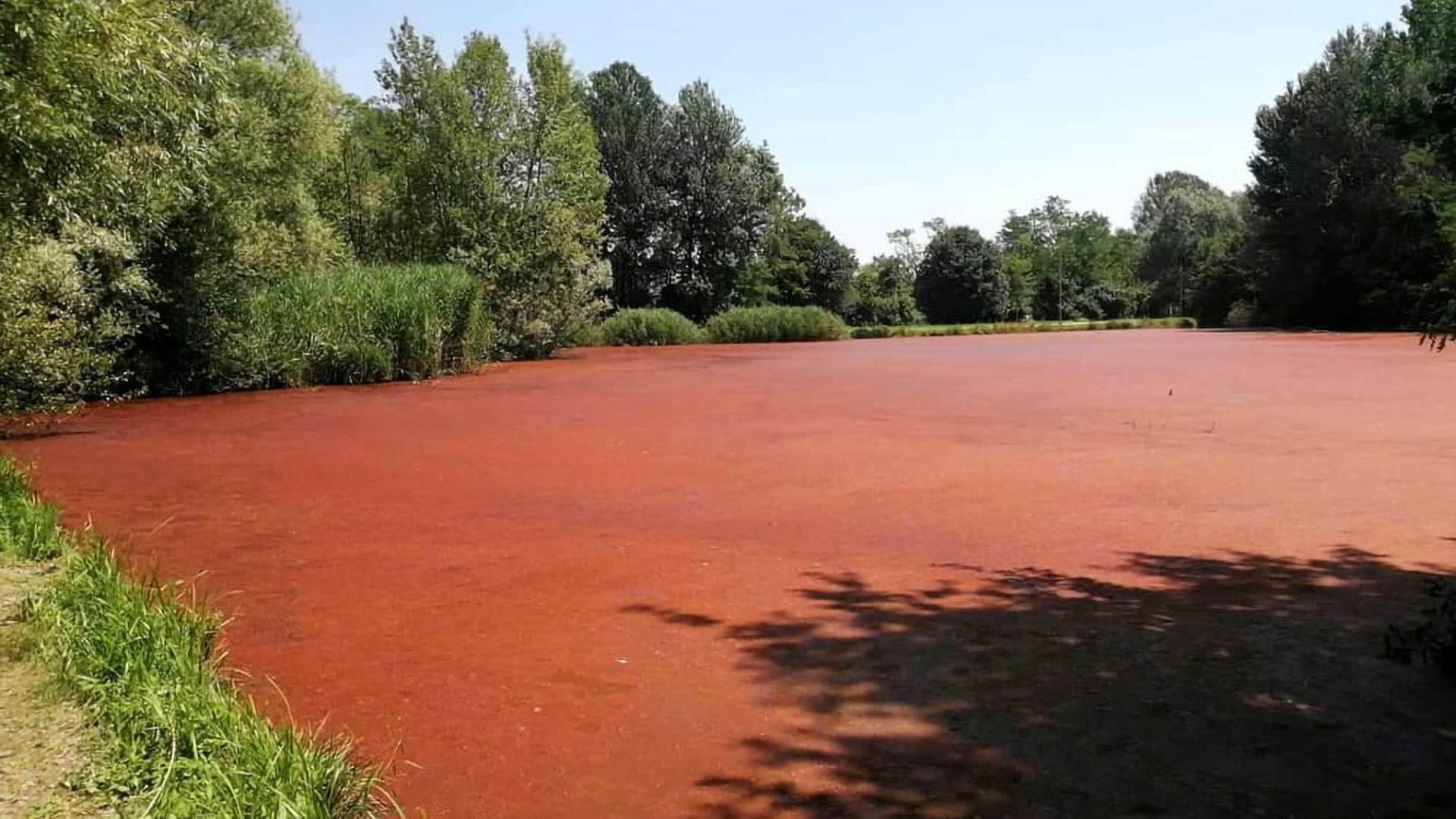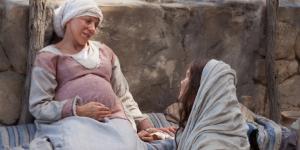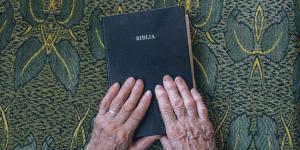You are here
Why Were Particular Plagues Sent against Egypt?

Exodus 7:3, 5
The Know
The book of Exodus records a dramatic showdown between Pharaoh, who claimed to be a god and to have the support of the Egyptian gods, and the Lord, through his representatives Moses and Aaron. As Pharaoh defies the Lord’s demand to release the enslaved Israelites, a series of ten plagues is brought down upon Egypt to compel Pharaoh’s hand and demonstrate the Lord’s superior status as the true God (Exodus 7–12).
Celebrated for generations by Jews across the world during Passover, the account has taken on epic proportions and has been popularly memorialized in movie and song. Naturally, it has also attracted considerable attention from biblical scholars and Egyptologists as they have sought to better understand the significance of both the plagues as a whole and each plague individually. In recent years, scholars have increasingly emphasized how understanding ancient Egypt—its physical environment, its religion, and its royal ideology—clarifies why specific plagues were used by the Lord.
For example, academic studies of the seasonal cycles and natural phenomena of Egypt have found that the individual plagues and their order of occurrence can be tied the annual inundation of the Nile.1 In years of extremely high flooding, due to high rains at the source waters of a major Nile tributary in Ethiopia, algae-rich soil turns the waters blood-red, giving off a putrid smell, killing the fish, and making the waters undrinkable (compare Exodus 7:15–25). This sets off a chain reaction that leads to frogs fleeing the marshy banks for dry land and culminates in both humans and animals alike suffering from serious skin infections, thus accounting for plagues 2–6 (see table).
These events would have played out over the course of several months, beginning in July or August when the Nile flooding occurs and culminating around January. The next three plagues—the hailstorm, the swarms of locusts, and the thick darkness which could be “felt”—are all linked to seasonal winds occurring from February to April. Thus, the whole sequence would have culminated in the spring, corresponding to the timing of Passover.
This does not mean that the plagues were not divine “signs and wonders,” as the biblical account refers to them (Exodus 7:2). The Book of Mormon also refers to these types of divine punishments and destructions as “pestilences” (see Helaman 10:6). The Lord, on needed occasions, has used—and intensified—these natural phenomena in order to bring about divine justice and judgments. Doing so in Egypt conveyed to Pharaoh that each plague was no idle threat from Moses or the Lord—it was a real possible risk that he would have understood. This meant the pharaoh had no excuse for ignoring or dismissing the announcement of each new plague as fanciful or unlikely.
Using these phenomena also cut to the heart of Egyptian beliefs about their gods and kings. In Egyptian religion and ideology, it was the gods of Egypt—embodied by the Pharaoh as their living representative—who were supposed to control these processes and guarantee the natural order.2 As some biblical scholars have argued, individual plagues can be related to the responsibilities of specific Egyptian deities (see table)—and thus showed that it was the Lord, not the Egyptian gods, who actually wielded control over that aspect of the natural world (cf. Exodus 12:12; Numbers 33:4).3
Likewise, the Pharaoh, as divine king and representative of the gods, was believed to ultimately be in control of the natural world (cf. Exodus 6:1).4 It was the Pharaoh who was supposed to control the flooding of the Nile, and when the river was the color of blood, it was taken to be a sign of a weak king.5 For the ninth plague, “there was a thick darkness in all the land of Egypt” (Exodus 10:22). According to Latter-day Saint Egyptologist Kerry Muhlestein:
The darkening of the sun may be the most direct attack against Pharaoh’s ability to fulfill his royal duties in the face of Jehovah’s power. … The king was seen as being directly responsible for Egypt receiving sunlight or for illuminating the two lands. … The presence of the sun was a mainstay of Egyptian theological stability and royal ideology. Thus, Jehovah’s power over the sun was monumental. It was incontrovertible evidence that the king had been bested.6
The Why
Understanding the ancient Egyptian context not only explains the specific plagues and their sequence, but also their cumulative effect, which was to throw the natural order into total chaos. Muhlestein explained:
Contaminated water, too many frogs, various insect infestations, disease among humans and animals, storms, loss of crops, the sun being darkened, and loss of human life are all elements of disorder that touch on every aspect of Egyptian life. These calamities as individual catastrophes were just the sort of thing that the king was supposed to prevent, but their arrival in an unrelenting sequence could be seen as nothing short of chaos triumphing over order.7
The pharaoh was, first and foremost, supposed to maintain order and prevent chaos. Thus, as John Currid concluded, “The plagues were an overwhelming assault on Pharaoh and his status as a god in Egypt. … Ultimately, the principal aim of the plagues was the glorification of Yahweh and the recognition of his sovereignty over all.”8 Similarly, Nahum Sarna explained, “The pharaoh was a self-proclaimed god, the object of worship by his subjects. … Consequently, the plagues, the ignoble defeat, and the ignominious end of the god-king constitute a saga that breathes contempt for Egyptian paganism.”9
Nothing could have more effectively and clearly conveyed to the Egyptians (see Exodus 7:5) that the Lord—and not the Pharaoh or their gods—was in control of the natural world than throwing into chaos the annual cycle that normally brought life and prosperity to Egypt, and instead using it to bring devastation and destruction.
As Muhlestein has pointed out, part of the irony of the story is that the pharaoh did have the power to make the chaos stop—all he had to do was agree to let Israel go and let God prevail. “Yet in his arrogance, Pharaoh refused to comply with Jehovah’s request, and thus Pharaoh created the scenario that highlighted his impotence before God. This ultimately created chaos, the antithesis of everything Pharaoh was supposed to create but was powerless to do so when in conflict with the desires and decrees of Jehovah.”10
Today, many may find that when they resist God’s will for them in their life, it similarly may lead to chaos, albeit on a smaller scale. Instead of being like Pharaoh, “We can choose to let God prevail in our lives,” and, “We can choose to let God be the most powerful influence in our lives.” If we do so, President Russell M. Nelson has promised “you will experience for yourselves that our God is ‘a God of miracles.’”11
Further Reading
Kerry Muhlestein, “‘What I Will Do to Pharaoh’: The Plagues Viewed as a Divine Confrontation with Pharaoh,” in From Creation to Sinai: The Old Testament through the Lens of the Restoration, ed. Daniel L. Belnap and Aaron P. Schade (Salt Lake City: Deseret Book; Provo, UT: Religious Studies Center, Brigham Young University, 2021), 448–482.
Book of Mormon Central, “Why Did Abinadi Warn the People of an East Wind? (Mosiah 12:6–7),” KnoWhy 560 (May 5, 2020).
Plagues of Egypt Table
Egyptian Perspectives on the Plagues of Egypt12
|
Plague |
Natural Phenomena |
Egyptian Deities |
Roles of Pharaoh |
|---|---|---|---|
|
1. Waters turned to blood, fish die, water stinks, and is undrinkable (Exodus 7:14–24) |
Algae rich soil from excessive flooding turns the Nile waters blood-red and alters the oxidation of the water, killing fish and causing it to stink and taste foul. |
Hapi was the god of the Nile, and personified the annual inundation that usually brought life and fertility. The waters turning blood red and killing the fish meant that Hapi could not provide needed sustenance. |
In some sources, the king is portrayed as the one who brings about the “reddening” of the Nile. In other sources, the king wields control over the Nile, but when it turns blood-red it is a sign of a weak king. |
|
2. Frogs infest the land and then die out and stink (Exodus 8:1–14) |
In response to the flooding and reddening waters, frogs would leave the marshy banks and invade the dry land. Meanwhile, the dead and rotting fish would infect insects (which the frogs eat) with anthrax, which carried the disease to the frogs, causing them to die off. |
The goddess Hekhet (depicted with a frog head) was supposed to control and manage the frog population and prevent it from getting unwieldy and out of control. The overpopulation of frogs demonstrated that she was powerless to stop the Lord who wielded true power. |
Hekhet was the consort of the creator god Khnum, who was embodied on earth in the pharaoh. Thus, the king was attacked indirectly through the discrediting of the creator’s consort. |
|
3. An infestation of gnats or mosquitos (Exodus 8:16–19)13 |
Pools and puddles from the abnormally high flooding would be a prime breeding ground for gnats and mosquitos, which would flourish after the frogs (a predator of flying insects) died off. |
No clear connection, but some have suggested that flying insects could allude to the Egyptian god Kheprer, who was symbolized by the flying beetle. |
The infestation of the land with pests contributes to the overall chaos in the land and undermines the king’s claim to uphold the natural order. |
|
4. Swarms of flies, which do not affect Hebrews (Exodus 8:20–31 |
Presumably a biting fly, such as the dog fly, which likewise could flourish after all the frogs died off. Goshen, where the Hebrews lived, was geographically shielded from the swarms of flies in the main Nile Valley. |
No clear connection, but some have suggested that flying insects could allude to the Egyptian god Kheprer, who was symbolized by the flying beetle. |
The infestation of the land with pests contributes to the overall chaos in the land and undermines the king’s claim to uphold the natural order. |
|
5. An infectious disease falls upon the livestock of the Egyptians, but not the livestock of the Israelites (Exodus 9:1–7) |
The swarm of flies could have been carriers of the previously mentioned anthrax infections. Livestock which then consumed infected pastureland died. Hebrew livestock unaffected since Goshen was protected against the swarming flies. |
Bull cults were common in Egypt. The gods Apis, Ptah, and Re could all be symbolized as the bull. The goddess Hathor was associated with the cow. |
The pharaoh was often depicted as a herder who cared for the livestock, and royal symbolism included the shepherd’s crook and flail. Kingship was also connected to bull and ram symbolism. |
|
6. Skin sores afflict all the Egyptians and their livestock (Exodus 9:8–12) |
Bites from the anthrax-infected flies results in a non-fatal skin infection. Israelites are once again not affected since Gosh was protected against the swarming flies. |
The goddess Sekhmet was responsible for preventing epidemics and for healing infectious diseases in both humans and animals. |
Kingship was connected with Osiris, who is supposed to prevent things from putrefying or swelling up. The king was also supposed to be able to provide for the general health and well-being of the people. |
|
7. A great hailstorm, which kills people and livestock caught out in the storm and destroys the barley and flax harvest, but does not affect Goshen (Exodus 9:13–35) |
Due to the weather patterns that prevail in February, when barley and flax are growing, a major hailstorm would go straight north to south, and thus bypass Goshen leaving it unaffected. |
This catastrophic hailstorm would challenge the authority of the Egyptian sky deities, such as Nut, Shu, and Tefnut. |
The pharaoh’s power was manifest in storm clouds and lightning, and thus he was supposed to be able to protect the people from storms. (On the damage to crops, see below.) |
|
8. Swarms of locusts brought by the east wind, which devour what is left of the crops and then are swept away by a west wind (Exodus 10:1–20) |
Locust are a commonly known pest in the ancient Near East. They breed in east Sudan and move north along the Red Sea. An east (or southeast) wind would blow them into the Nile Valley, and then a “sea wind” (from the north or northwest) would clear them out. |
The god Senehem was a divine protector against pests like grasshoppers. |
The king was supposed to ensure a good harvest and prevent calamities like a locust infestation that destroys the crops. A ravaged crop was a sign of a weak king. |
|
9. A thick darkness that can be felt obscures the sun for three days, but the Israelites still had light (Exodus 10:21–29) |
Hot southern winds, known as khamsin, blow in sand from the Sahara Desert in March and April. A large wind storm at this time can completely darken the sky for days at a time. Once again, the geography of Goshen largely shields it from this phenomena. |
The chief Egyptian god, Amun-Re, was the personification of the sun. An inability of the sun to shine reflected an inability of Amun-Re to give life. |
The king was closely associated with Re and was regarded as the Son of Re. He was believed to be directly responsible for Egypt receiving sunlight and for guiding the sun safely in its course in the sky. |
|
10. Death of all the firstborn Egyptians and their livestock (Exodus 11:1–10; 12:29–31) |
N/A |
Pharaoh himself was regarded as a deity, and thus the death of the pharaonic heir was a challenge to his divine succession. |
Pharaoh was supposed to wield the power to decide who would die and who would live, and to protect the youths of Egypt from death. |
- 1. The following summary is based on James K. Hoffmeier, Israel in Egypt: The Evidence for the Authenticity of the Exodus Tradition (New York, NY: Oxford University Press, 1996), 146–149; K. A. Kitchen, On the Reliability of the Old Testament (Grand Rapids, MI: Wm. B. Eerdmans, 2003), 249–251. See also James K. Hoffmeier, “Egypt, Plagues In,” in Anchor Bible Dictionary, 6 vols., ed. David Noel Freedman (New York, NY: Double Day, 1992), 2:374–376; Nahum M. Sarna, Exploring Exodus: The Origins of Biblical Israel (New York, NY: Schocken Books, 1986), 68–73.
- 2. See Kerry Muhlestein, “‘What I Will Do to Pharaoh’: The Plagues Viewed as a Divine Confrontation with Pharaoh,” in From Creation to Sinai: The Old Testament through the Lens of the Restoration, ed. Daniel L. Belnap and Aaron P. Schade (Salt Lake City: Deseret Book; Provo, UT: Religious Studies Center, Brigham Young University, 2021), 448–482; John D. Currid, Ancient Egypt and the Old Testament (Grand Rapids, MI: Baker Books, 1997), 108–120.
- 3. Currid, Ancient Egypt and the OT, 108–113. See also Sarna, Exploring Exodus, 78–80.
- 4. Muhlestein, “What I Will Do to Pharaoh,” 458: “It is impossible to entirely separate Pharaoh from the pantheon of which he was an integral part and for which he served as the earthly representative.”
- 5. Muhlestein, “What I Will Do to Pharaoh,” 463–464.
- 6. Muhlestein, “What I Will Do to Pharaoh,” 469.
- 7. Muhlestein, “What I Will Do to Pharaoh,” 476.
- 8. Currid, Ancient Egypt and the OT, 120.
- 9. Sarna, Exploring Exodus, 80.
- 10. Muhlestein, “What I Will Do to Pharaoh,” 477.
- 11. President Russell M. Nelson, “Let God Prevail,” general conference, October 2020, online at churchofjesuschrist.org.
- 12. Information in this table is based on the following sources: For the natural phenomena, see Hoffmeier, Israel in Egypt, 146–149; Kitchen, Reliability of the OT, 249–251. For the Egyptian deities, see Currid, Ancient Egypt and the OT, 108–113. For the roles of Pharaoh, see Muhlestein, “What I Will Do to Pharaoh,” 461–471.
- 13. Although the KJV has “lice,” more recent translations (e.g., NIV, NSRV, NET, ESV) tend to say “gnats.” Scholars have argued that it more particularly referred to mosquitos. See Hoffmeier, “Egypt, Plagues In,” 375.
KnoWhy Citation
Related KnoWhys
Subscribe
Get the latest updates on Book of Mormon topics and research for free





